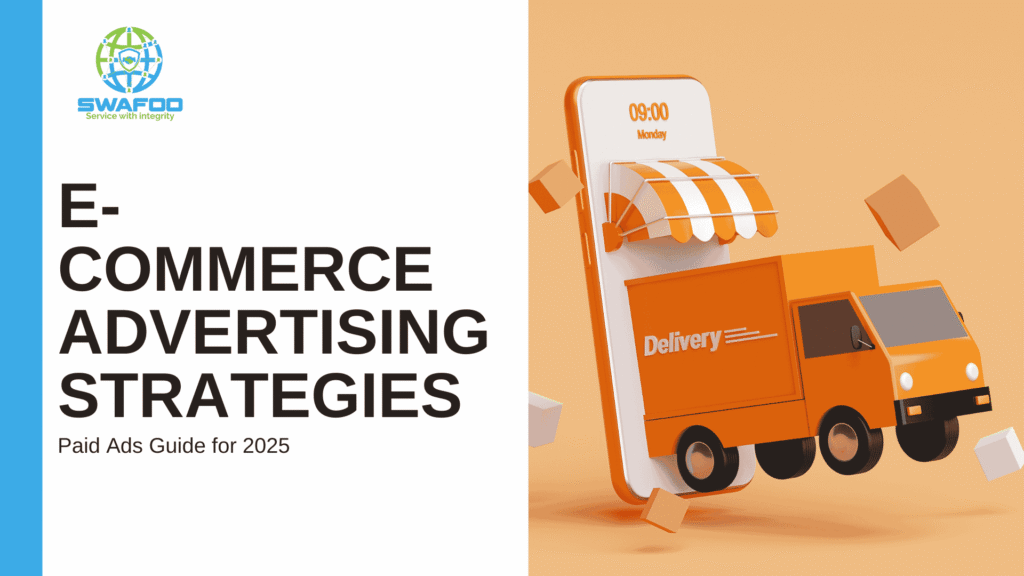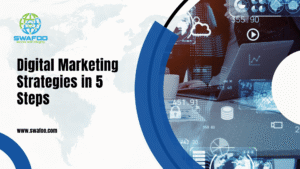
The Truth About SEO and Web Design: How Smart Design Can Improve Your Ranking
SEO and Web Design Every business wants to appear at the top of search engines. But few realize how closely web design and SEO work

Paid Ads Guide for 2025.In the fast-evolving digital landscape of 2025, mastering e-commerce advertising strategies is no longer optional; it’s essential. Whether you’re a seasoned ecommerce business owner or just entering the online marketplace, paid ads can either be your biggest revenue driver or your most expensive mistake. This guide will break down the best ecommerce advertising strategies that actually work in 2025, helping you maximize your ad spend and drive sales like never before.
E-commerce advertising refers to the paid strategies brands use to promote their online stores and products. As competition increases across every social media platform and search engine, e-commerce brands must leverage paid ads to gain visibility, reach the right audience, and outshine competitors.
In 2025, e-commerce paid advertising is deeply tied to personalization, automation, and conversion metrics. E-commerce advertising strategies now rely heavily on data, AI-driven targeting, and a mix of formats like video ads, shopping ads, and display ads. The best ecommerce brands understand that an effective ecommerce advertising strategy is about delivering the right message to the right people at the right time.
The difference between e-commerce advertising and e-commerce marketing lies in intent and execution. E-commerce marketing is the broader strategy that includes email marketing, content marketing, SEO, and social media engagement. E-commerce advertising, on the other hand, specifically refers to paid ads, such as search ads, display ads, and social media ads.
Understanding this difference matters. Marketing strategies build long-term brand awareness, while paid advertising is about short-term conversion. Smart ecommerce brands blend both for a balanced ecommerce marketing strategy.
The benefits of e-commerce advertising are more tangible in 2025 than ever. Brands can now:
With a range of ad formats available, e-commerce advertising is essential for any e-commerce business looking to thrive in a saturated market.
From Facebook Ad campaigns to TikTok Ads and Google Shopping Ads, paid ads come in many forms. But which ones offer the most bang for your buck?
Google Ads remains the top advertising platform for high-intent search traffic. Search ads and Google Shopping Ads help ecommerce stores appear at the top of search engine results, right when potential customers are ready to buy. You can target by keyword, location, device, and more to optimize for conversion.
In 2025, TikTok isn’t just a platform for viral dances; it’s a high-converting ecommerce ad channel. TikTok Ads use engaging video formats to drive product discovery. Personalized ads and influencer partnerships on TikTok are known to boost e-commerce sales for Gen Z and Millennial shoppers.
Facebook Ads and Instagram Ads are essential for retargeting and lookalike audience campaigns. With the right ad copy and creative visuals, you can retarget cart abandoners, upsell to existing customers, and build brand awareness.
Running an ad campaign is one thing. Optimizing it for performance and ROI is another.
Keywords are the backbone of Google Ads and Search Ads. Use long-tail keywords to reach customers who are closer to conversion. Tools like Google Keyword Planner can help you find terms that offer the best return on ad spend.
Retargeting allows you to reach users who visited your ecommerce site but didn’t convert. Through display ads and social media advertising, you can remind them of your product or service and drive them back to purchase.
Never rely on a single ad format. A/B testing your ad copy and visuals is a best practice. Try video ads, carousels, and static images to see what drives higher conversion rates. Personalized ads tend to perform best.
In 2025, mobile ad spend is at an all-time high. Ensure your ad formats and ecommerce store are optimized for mobile conversions. Load times, button placements, and ad readability all impact performance.
Let’s look at the best ecommerce advertising strategies that are turning heads this year.
Don’t rely on just one platform. Spread your ad spend across Google Ads, TikTok, Facebook Ad, and Instagram Ads to reduce risk and increase visibility.
Video ads dominate in 2025. Platforms like TikTok and Instagram Reels prioritize video formats, and they often outperform static images in both engagement and conversion.
Retargeting isn’t new, but it’s more effective with AI. Lookalike campaigns on Facebook and Instagram allow you to scale your reach using data from existing customers.
Use display ads across the Google Display Network to stay top of mind. These are great for building brand awareness even if the user doesn’t convert right away.
Monitor KPIs like conversion rate, ad spend, click-through rate, and customer acquisition cost. An effective ecommerce ad strategy is always data-driven.
Managing ad spend is one of the top concerns for ecommerce businesses.
Staying within budget while maintaining performance is all about tracking the right metric and continuously optimizing.
A successful ecommerce ad campaign starts with clear goals and ends with measurable results.
Each ad campaign should align with your overall ecommerce marketing strategy.
Still a top performer for ecommerce advertising, Facebook allows for detailed targeting, dynamic ads, and seamless retargeting campaigns.
Instagram continues to be effective, especially with the rise of Reels and Shoppable Posts. Great for lifestyle brands and ecommerce businesses that thrive on visuals.
TikTok Ads have a lower cost-per-click (CPC) and a high engagement rate. They work best for e-commerce brands that can tell a story quickly and creatively.
Tracking performance is key to effective e-commerce advertising. Here are the top ecommerce metrics to watch:
These metrics help you improve your ad performance and justify your paid ad campaigns.
To thrive in 2025, e-commerce businesses must stay agile, data-driven, and customer-focused. Here are the most important things to remember:
By using these ecommerce advertising strategies and essential strategies, your ecommerce store can reach the top of search engine results, drive sales, and build a lasting brand.
Stay consistent, measure what matters, and never stop optimizing. That’s how you win in 2025.

SEO and Web Design Every business wants to appear at the top of search engines. But few realize how closely web design and SEO work

Marketing Strategies Creating digital marketing strategies that actually work isn’t about chasing trends or using every platform at once. It’s about focus, knowing what your